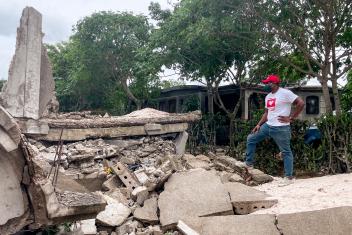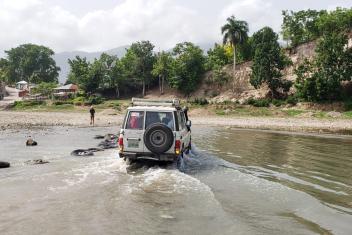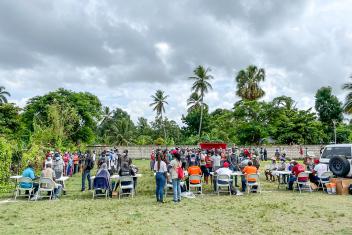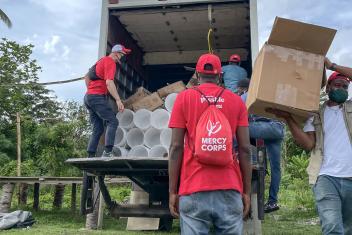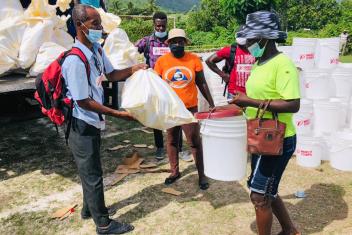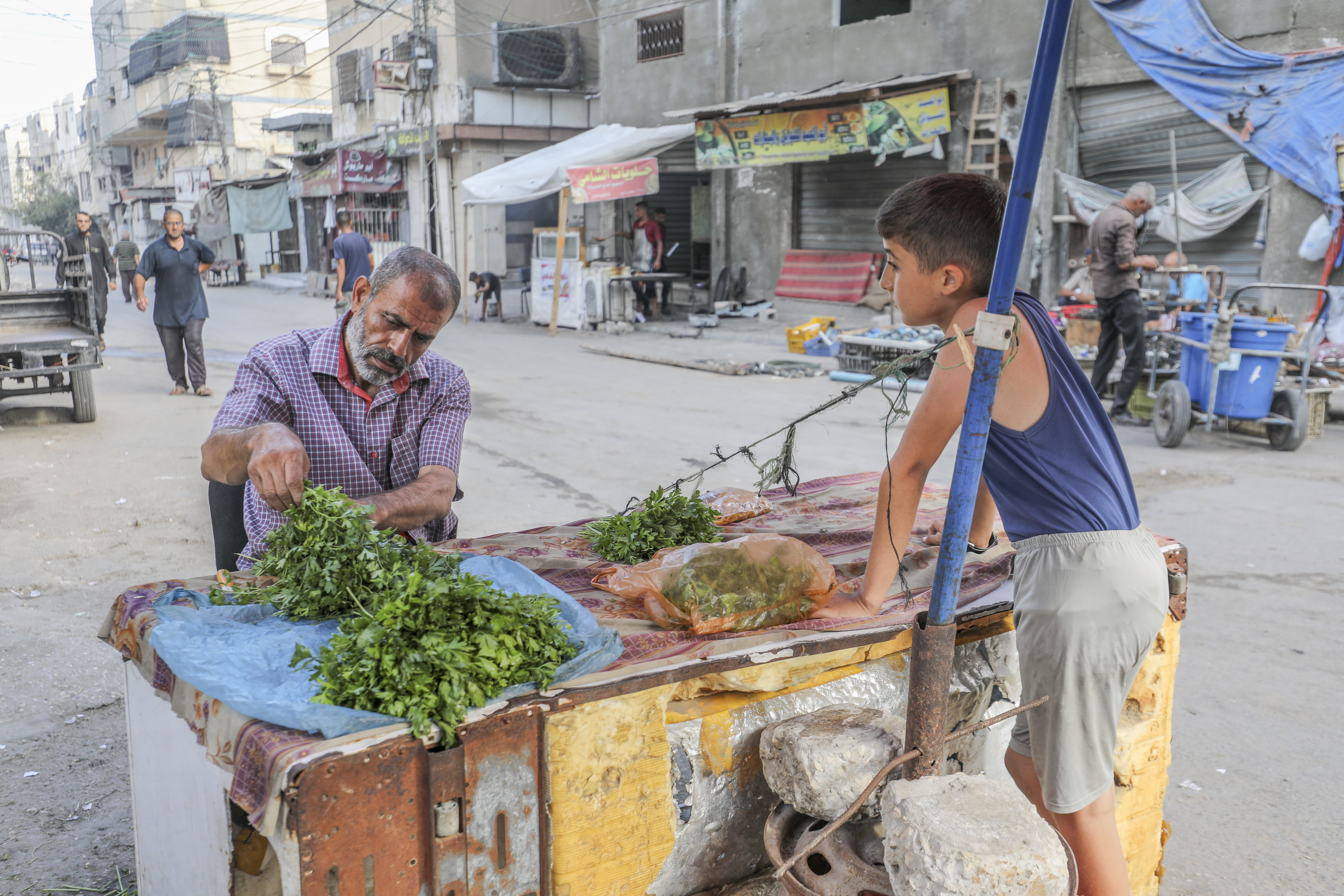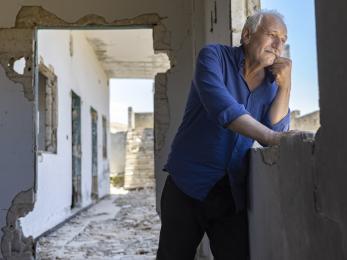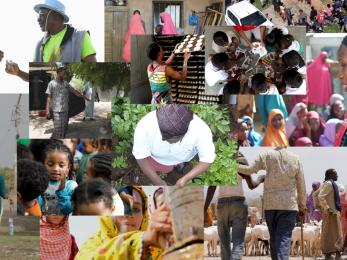Finding hope in Haiti

On the morning of August 14th, I received some of the most devastating phone calls from my team members in Nippes. I was in Port-au-Prince with my family, a four and a half hour car ride away, and had not yet understood the destruction of the magnitude 7.2 earthquake. The epicenter of the earthquake was near Nippes and the earthquake’s force was apparent from the stories and photos that were shared with me. Buildings and homes collapsed, families desperately searching for loved ones under the rubble, the injured seeking access to medical care. We collectively experienced a traumatic flashback to the catastrophic 2010 earthquake—it was utterly heartbreaking.
I immediately returned to Nippes to join my team in the emergency response. In the weeks that followed, our team worked tirelessly for 12 hours a day, without a day off. We endured aftershocks and Tropical Storm Grace that hit Haiti mere days following the earthquake. The torrential rain caused mudslides throughout L’Asile, making it difficult to reach residents who most needed supplies. L’Asile is a Nippes community in a rural and mountainous area, where almost 50% of homes have been destroyed and 90% have been damaged.
In L’Asile, I met Relia and her three children, who were taking refuge in a school that had quickly been converted into an emergency shelter. Although the school was partially damaged, it was the only option for the 200 people who took shelter there, sleeping on the floor in the cramped space. Even with the risk of COVID‑19, people were unable to social distance very well under the circumstances, with sparse shelter for families like Relia and her children. On the morning of the earthquake, Relia had just finished washing dishes when she felt the ground move beneath her and objects began to fall around her. She rushed outside but was missing one of her children, calling out to him as she fled her home. She found her son moments later, but the relief was temporary as she watched homes crumble around her. “My house is completely destroyed,” Relia said. “All my things are under the rubble. We have no clothes. We have nothing.”
Our immediate priority was to meet the urgent needs of the L’Asile community. We coordinated the delivery and distribution of kits made up of essential supplies like masks, hand sanitizer, soap, nappies, mosquito nets, and tarps. We faced challenges such as fuel shortages, low stock on the items we needed most, and how to navigate truckloads of supplies on narrow, unpaved roads. Fortunately, since we have been working in Haiti for more than a decade with a staff primarily made up of Haitians, we’ve built relationships with local communities and markets to move swiftly in order to get supplies to families as quickly as possible.
Since 2010, our first programmes in Haiti worked with communities on disaster preparedness, which included simulation exercises with local emergency response groups. We’ve collaborated with communities to lift families out of poverty by boosting small businesses, building young people’s skills, and helping rural farmers increase their income and improve their practices. Immediately after the 2010 earthquake, we reached more than one million people with emergency supplies, clean water, disease prevention, psychological support, and temporary jobs. Knowing that we were able to support so many people once before encourages me during a time where despair could easily take over.
In just these few weeks, we’ve reached about 15,000 participants with essential supplies and we will soon be distributing cash assistance to thousands of families so they can purchase what they need most. Although the earthquake could not have hit at a more distressing time since Nippes is already facing challenges from hunger, climate change, conflict, and the pandemic, our team is determined to support our communities through this emergency and recovery. We are already thinking ahead on how to help families recover their sources of income by working with farmers on new crops and helping small businesses restock their shelves.
We know the road to recovery from a disaster of this enormity will take time, resources, and commitment. We’re taking it day by day in Nippes, gathering strength and solace in the resilience of the communities we serve. It is no small task to rebuild homes and livelihoods, but we believe we can slowly build something anew together, brick by brick.

